Hyperion dimensions in the EBX® repository
Add-on datasets
The add-on is based on four main data sets:
'Oracle Hyperion EPM Dimensions' that collects all business information of the financial data.
'Oracle Hyperion EPM Extract Configuration' that allows you to extract data based on configuration settings.
'Oracle Hyperion EPM Mapping' that defines data mapping between EBX® and Hyperion applications.
'Oracle Hyperion EPM Report' that collects all import/export result information.
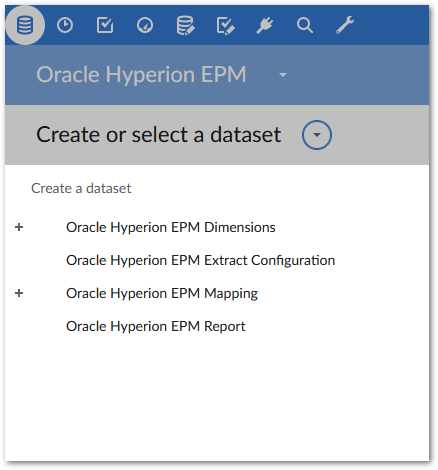
Every data set created in the Oracle Hyperion EPM Dimensions dataset is based on a group of fields named 'Financial Data'.
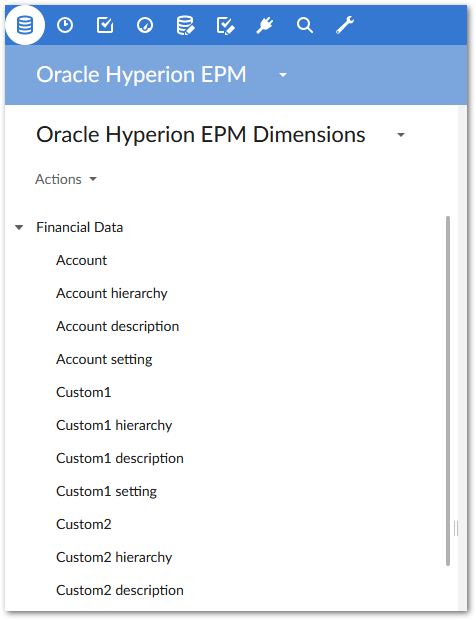
Below is an expanded view of the 'EPM Mapping':
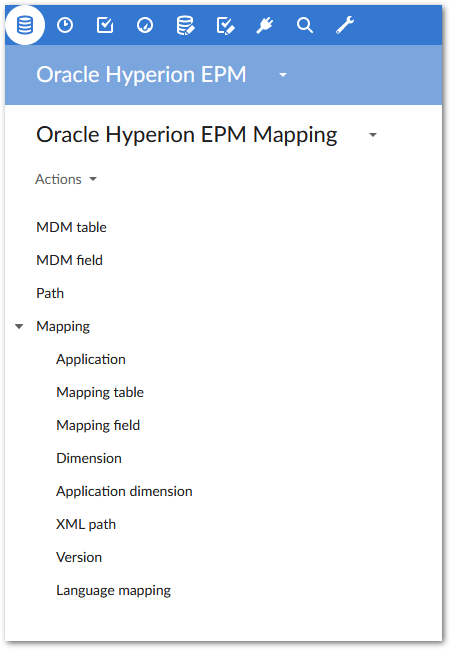
Representation of Hyperion dimensions in EBX®
A Hyperion dimension is defined in the EBX® repository as four tables, as follows:
The main table contains records with all the fields of the dimension grouped per type of application (HFM, Essbase, Planning). For example, the table 'Account' includes the field's name, description, etc. In the main group 'Hyperion financial management', the shared fields between all types of application are located in the group named 'Shared information'.
The hierarchy table contains all parent-child relationships between records in a dimension. The naming convention for the label of the table appends "Hierarchy" to the name of the dimension. For example, for the 'Account' hierarchy, the technical name of the table becomes "AccountHierarchy".
The description table contains all the localized names of records for a dimension. The naming convention appends "Description" to the dimension name. For example, the technical name of the description table of 'Account' becomes "AccountDescription".
The setting table contains all technical parameters used by Hyperion applications. This data is grouped by 'Dimension Attributes' and 'Dimension Properties'.
Some dimensions do not have any relationship definitions or descriptions and thus only include the main table. This is the case for the dimensions ICP, Security Class, View, Alias.
Navigating relationships in the repository
For each dimension with managed relationships, a hierarchical table view is configured in the EBX® repository on the main table of the dimension. This hierarchical table view is named 'Parent to child'. Using this tree view, it is easy to access and handle relationships, for example, to attach, detach, move, delete, and create children.
Active and '#root' fields
To enable the management of Hyperion relationships within the hierarchy view in EBX®, the add-on uses two fields:
active: a boolean field that is automatically initialized to 'true' when the add-on creates a new relationship for a dimension. To omit a relationship from the hierarchy, set this field in the relationship to 'false'. During normal usage of the add-on, only the 'true' branch of the hierarchy is used. The user service 'Switch active', available on each hierarchy table, allows selecting multiple records and activating or deactivating them all at once. During the export procedure, relationships set to 'false' are not exported.
#root: the first level of the hierarchy.
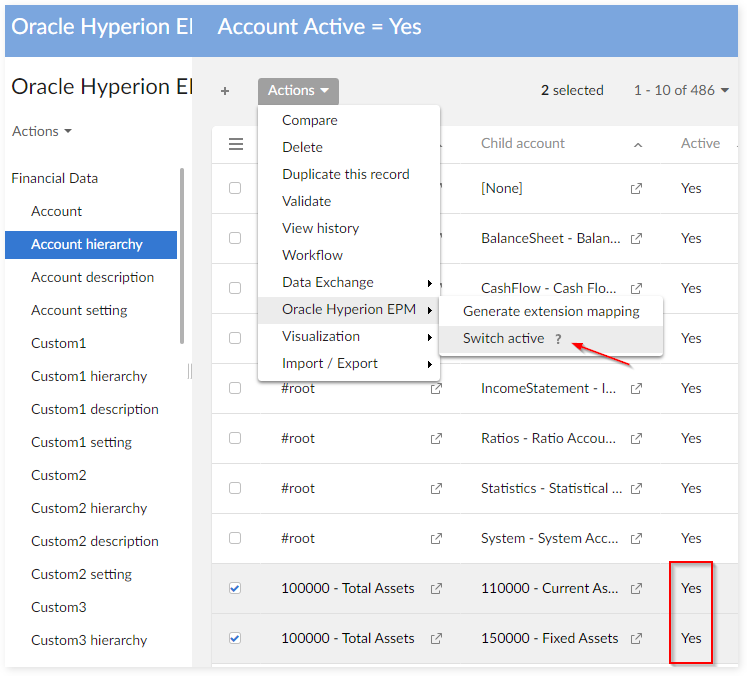
'Send to end' a node in a data hierarchy
This service is used to send one or more records to the last children position in a the data hierarchy. It works on data hierarchy, table and record views.
Note: the service 'Send to end' is available for the add-on only. This is not a generic EBX® feature.
Applied on a data hierarchy view
'Send to end' for multiple nodes
Select some nodes and use the service 'Send to end':
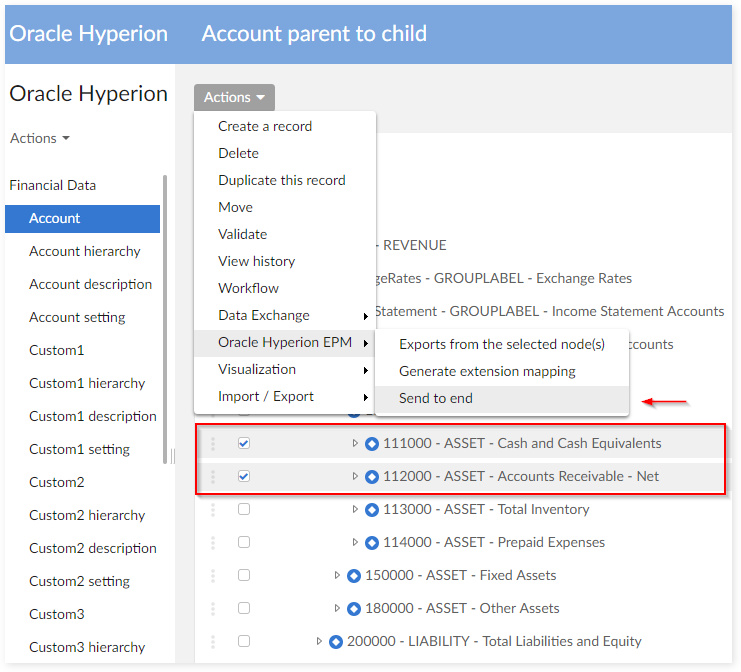
After the execution of the 'Send to end':
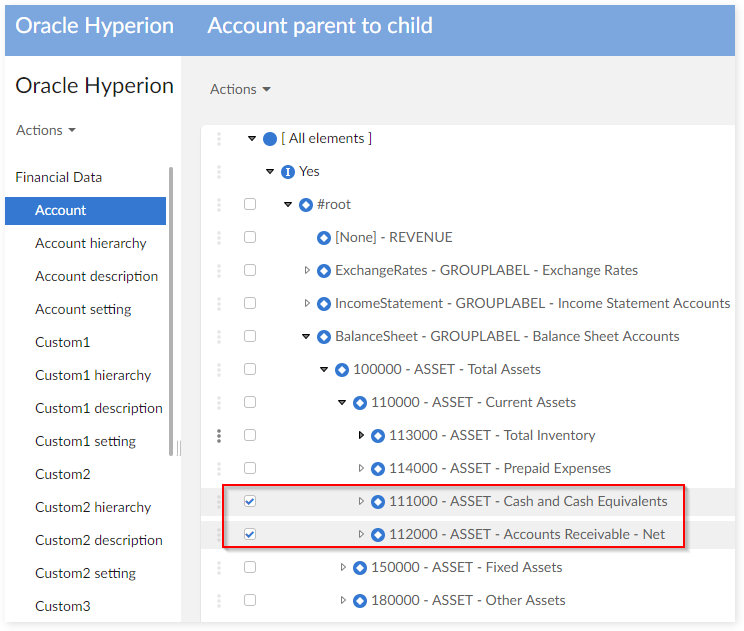
'Send to end' for one node only
On one node, the service 'Send to end' is executed:
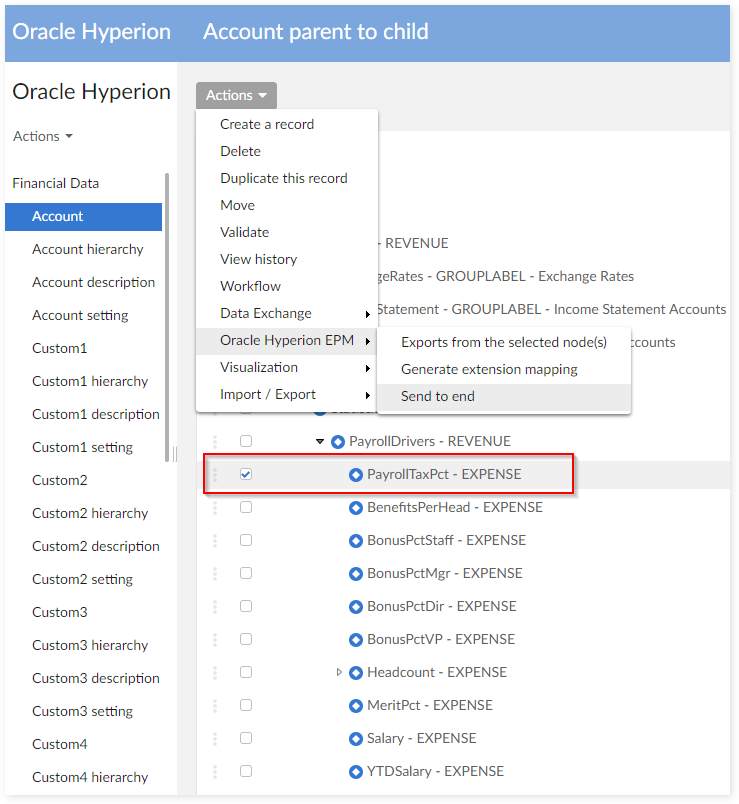
After the execution of the 'Send to end':
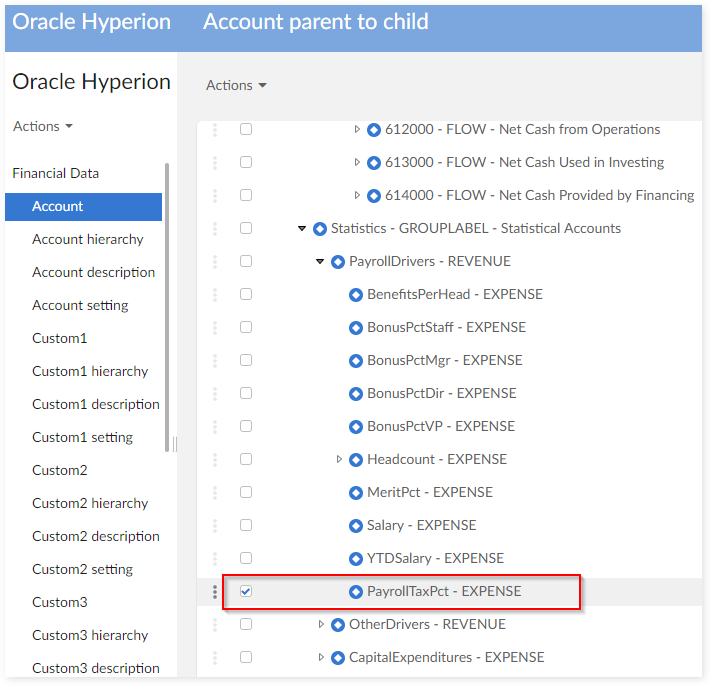
Applied on a table view
The behavioral is the same than one applied on the data hierarchy views.
Select some records and execute the 'Send to end':
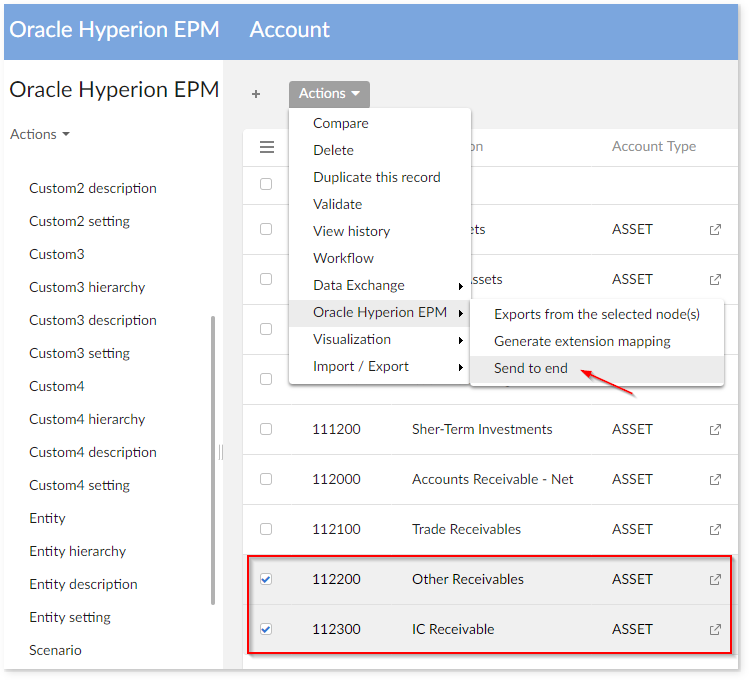
Open the Data Hierarchy view to check the result of the 'Send to end':
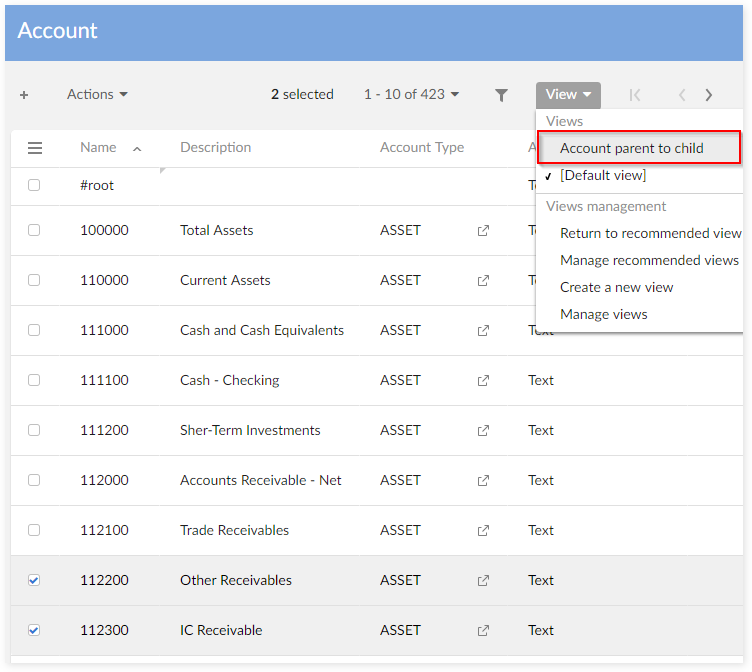
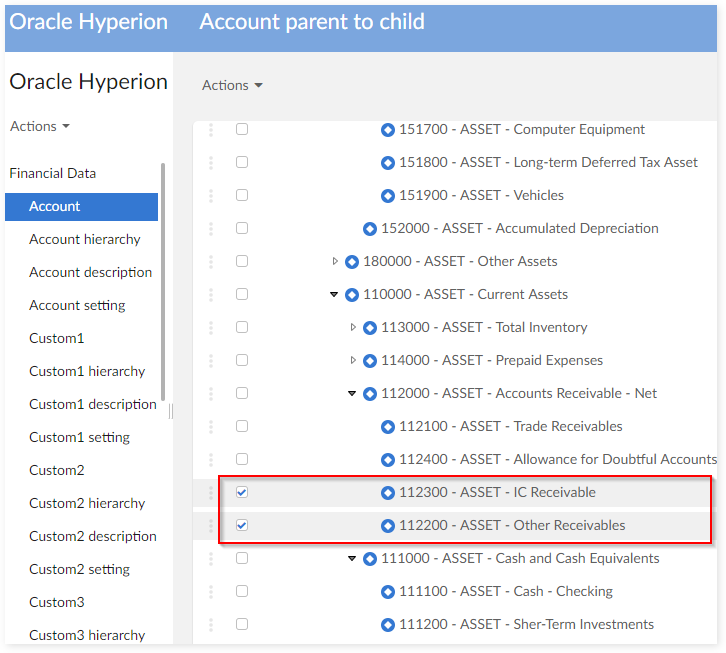
Applied on a record view
The record is not in the group 'Active unset'
On a table records view, when the service 'Send to end' is executed, the system applies the same procedure than on saw in previous section. For example:
On one record, use the service 'Send to end':
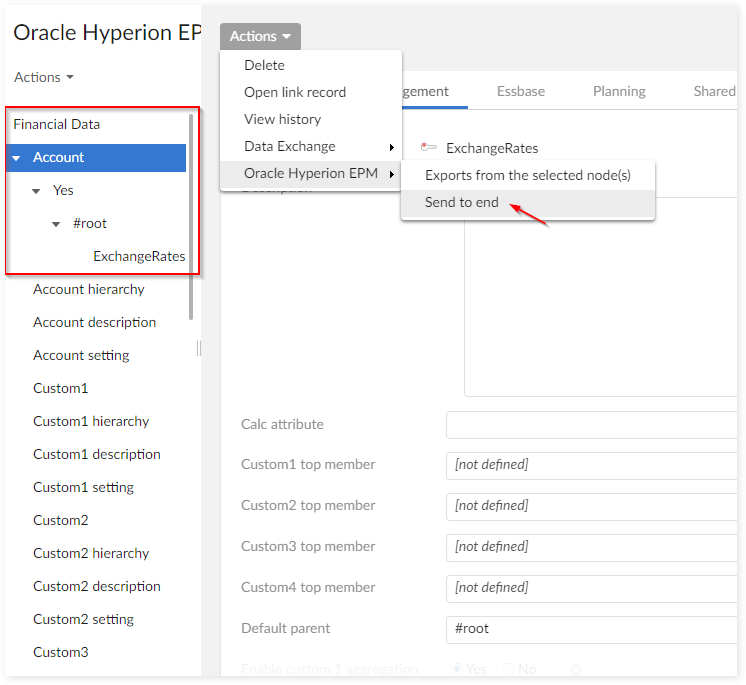
Return to the data hierarchy view to check the result:
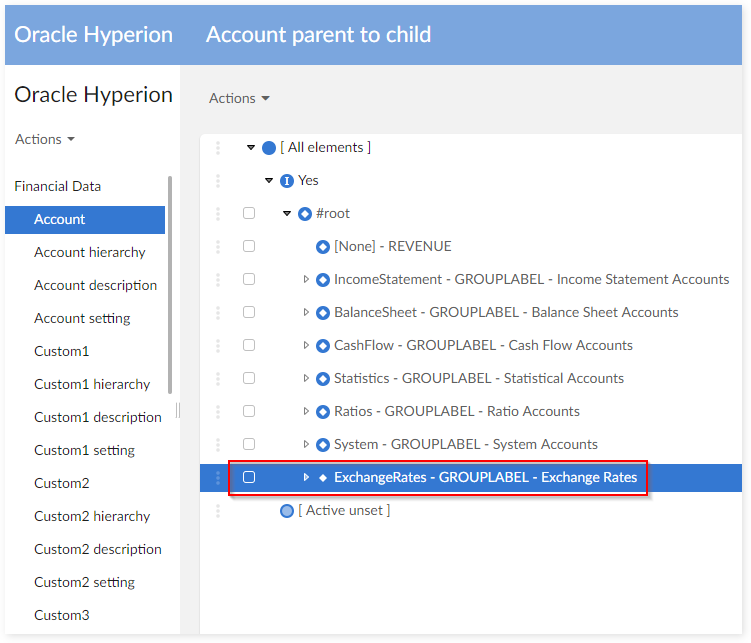
The record is in the group 'Active unset'
This case is unsupported because all records in the group "Active unset" don't have neither parent nor child.
A record is child of more than one parent records
When a record which is a child of many parent records is selected, all nodes containing this record as a child are selected on the data hierarchy view:
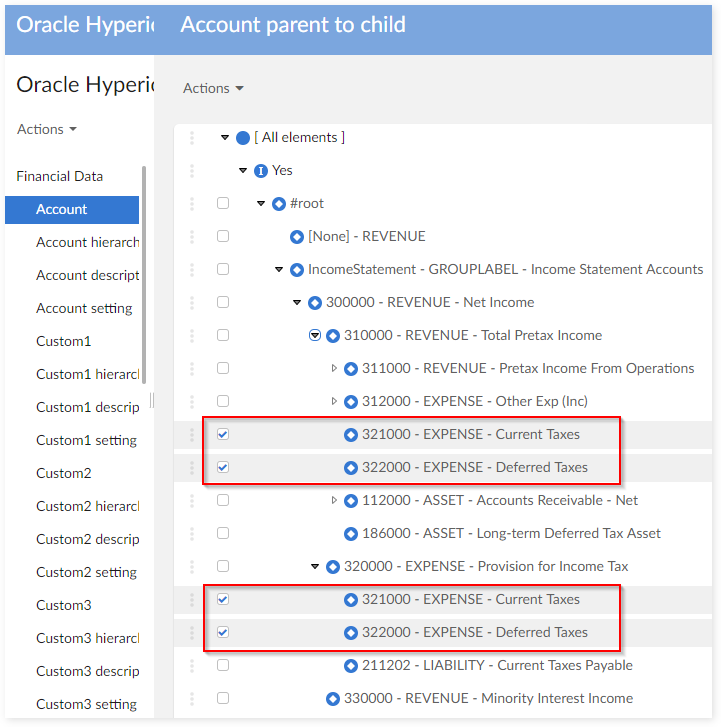
Then, all of these nodes are sent to end:
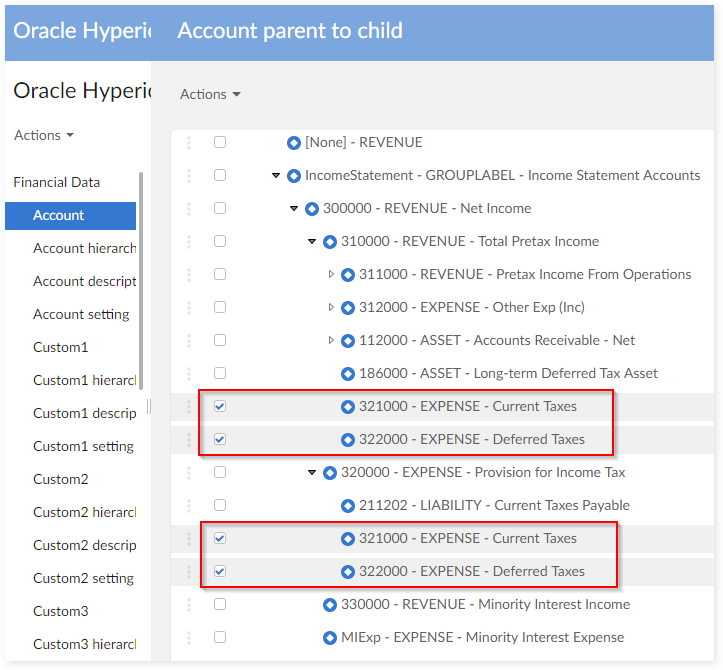
Record with no parent
It is impossible to send to end a record without parent. For example, the record '614100' have no parent and the execution of the service 'Send to end' raises an error.
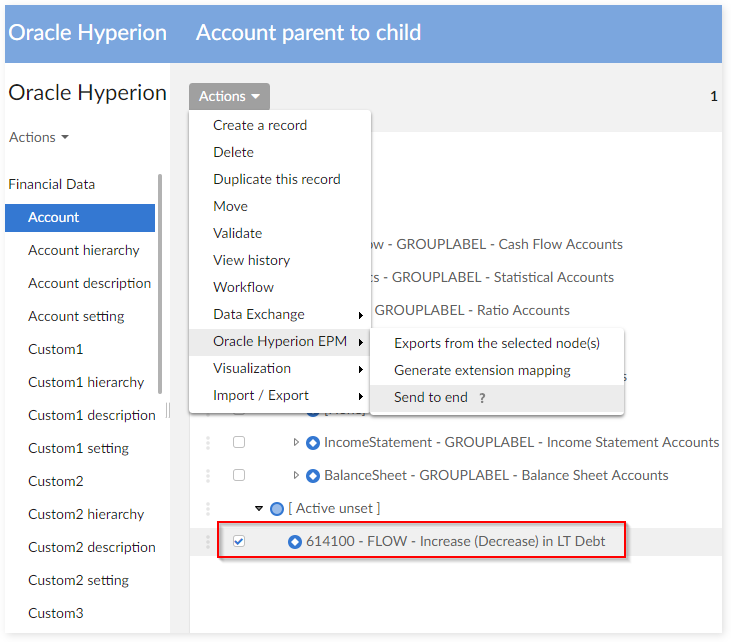
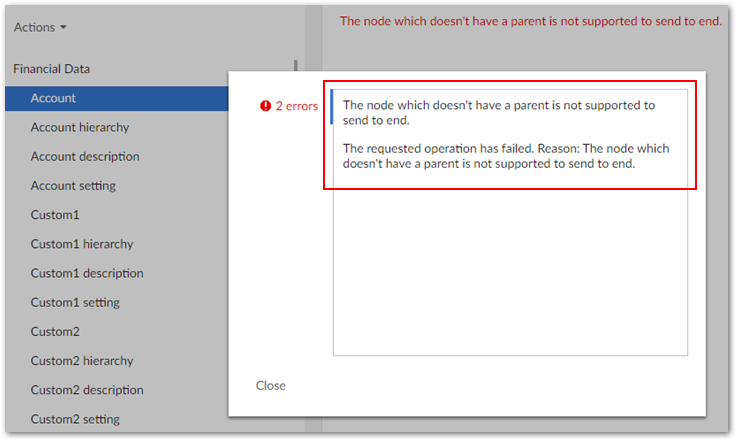
Record in the group 'Active unset'
This case is unsupported because all records in the group "Active unset" don't have neither parent nor child.